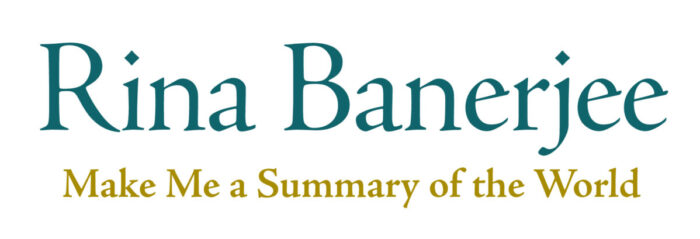
For Banerjee, the female body is a site where cultural and social meanings intersect. Dress and decoration are at the root of her creations: many of her sculptures incorporate luscious silks, laces, and sequins sourced from her Garment District neighborhood in New York City. She questions the gendered biases associated with particular materials or colors: for example, why are pink feathers commonly considered feminine while a rope is typically perceived as masculine?
Banerjee’s work often combines beauty and repulsiveness, alluding to the brutality of patriarchal structures around the world that deny female sexuality or equality, through custom or force. Arguing against the binaries of male/female and Western/Eastern, Banerjee remarks that “ideas of the ‘foreign’ and the feminine have become joined in ‘policing’ one another, as well as being the subject of suspicion.”

Learn of their discovery, their complex physiological construction and fierce competition they grew attached and grew abnormally became lively with each others fondness for excitation, 2013
Acrylic on watercolor paper
Private collection, Miami
Banerjee’s figurative drawings often involve a kind of shape-shifting, in which human presence is implied through distorted bodily forms. Her process typically begins with the application of a water-based medium in loose abstract gestures and forms, from which a suggestion of a figure emerges. The fluidity of this approach is reflected here, as the two women melt and commingle with each other and the landscape.

In dream with grin she kissed and licked his alligator wings, peeled his toes of all its nails and waled at the site of killing, 2006
Steel, floral sticks, dry mushrooms, plastic beads, feather fans, horn, preserved alligator head, cowrie shells, linen threads, copper wire
Collection Bernadette de Bonrepos, Paris, France, courtesy of Galerie Nathalie Obadia, Paris/Brussels

I am all that could stretch, 2014
Acrylic, ink, silk sari cloth with gold-thread embroidery
Courtesy of Jessica & Greg Ransom
Read a community response to this object.

It Rained so She Rained, 2009
Ink, acrylic, and mixed media on handmade paper laid on board
The Komal Shah and Gaurav Garg Collection

imperial and Imposing, her body was ready for wedding—she articulated the splendor of lush gardens and bounty, unpolluted waters, untouched and unearthed territories, her body was mounted, frozen and waiting, 2013
Light bulbs, pigeon feathers, steel carbon wire, copper, silk thread, glass beads, cowrie shells, trim, wedding sari, seed beads, wood, horn, fleece
Courtesy of Isabel Stainow Wilcox

Wondering Heron, 2007
Mixed media
Private collection, Paris, courtesy of Galerie Nathalie Obadia, Paris/Brussels
This elegant work evokes the long-legged freshwater and coastal bird named in the title. Bright yellow and white plumage fans out on a strong diagonal, which is emphasized by the horn’s extension, angling upward. Leather whips gently curve and trail behind, mimicking the bird’s delicate legs in flight. In this and other sculptures, Banerjee acknowledges nature’s potential to provoke human feelings such as desire. Here, the whips and feathers allude to erotic pleasure and pain.

She drew a premature prick, in a fluster of transgressions, abject by birth she new not what else to do with this untouchable reach, unknowable body as she was an ancient savage towed into his modern present, 2011
Female mannequin form, amber bottles, epoxy American buffalo horn replicas, steel arm brace, silver and silk Banarasi wedding sari trim, Victorian doll head replica, 22-karat gold-plated Indian jewelry, glass magnifying dome, glass deer eye replica, Congolese elbow bangles, wood
Courtesy of Ota Fine Arts, Shanghai/Singapore/Tokyo
Banerjee links emotionally resonant objects and ambiguous language in a visual and textual stream of consciousness. Items associated with a young woman’s rites of passage—Indian wedding sari trim, gold jewelry, and a doll’s head—are given erotic undertones by the title, which suggests the emergence of sexual awareness. Phrases like “in a fluster of transgressions” and “abject by birth” reinforce the ominous tone established by the sharp horns flanking the mannequin, which was manufactured to display the clothes of a fourteen-year-old girl. Combining Congolese, Indian, and Western materials, Banerjee synthesizes unlike traditions in an expression of female awakening and danger.

With breath taking consumption her commerce ate while she was being eaten, 2008
Glass vials, jute charpai (cot), shells, cotton thread, plastic skull, sari cloth
Courtesy of the Tiroche DeLeon Collection and Art Vantage PCC Ltd.
Banerjee often combines objects in a way that explores the relationship between pleasure and pain. One is both attracted to and repulsed by the shimmering yet ghastly figure lying on the jute bed—a site associated with sex and death. Glass vials, possibly indicating unpleasant medical waste, form a tail that snakes away from the body. Decorated with alluring pink feathers, the tail further links abjectness and desire.
The work indirectly relates to class and colonialism. A familiar sight in rural South Asia, such jute beds are often used by Indian laborers and taxi drivers. Cultivated in eastern India, jute was a colonial export that yielded enormous wealth for European powers.

Little Red Riding Hood, 2010
Rooster feathers, steel, knitted mesh, wood, rhinestones, deity eyes, wooden doll, mink, fur, cowrie shells, thread
Collection Florence and Daniel Guerlain, Paris, courtesy of Galerie Nathalie Obadia, Paris/Brussels
Little Red Riding Hood is here recast as a shamanic figure, with the color red serving as an expression of power as well as a symbol of budding sexuality. The European fairy tale has long been interpreted as a metaphor for the confrontation between vulnerable young women and male predators. This version, however, shows Little Red Riding Hood as a courageous heroine rather than a victim. Banerjee confounds the geographical origins of the story and its gender roles by showing its protagonist dressed in an Indian sari and an African-style mask of cowrie shells, wearing red rooster feathers and a mustache. Boldly erect with clenched fists, this gender-fluid Red Riding Hood is ready for battle with the wolf.
